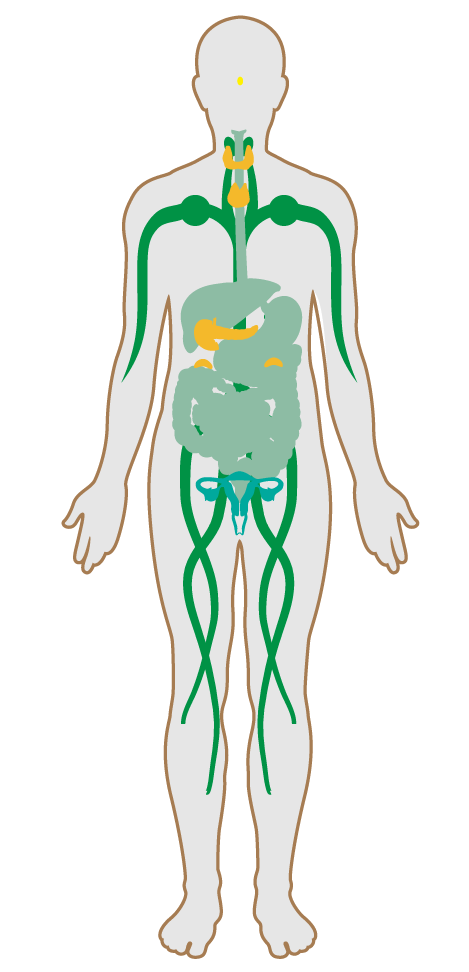Hand washing
- 38 Fruits and vegetables
- 39 Processed foods
- 40 Food allergies
- 41 Hand washing
- 42 Food contamination
- 43 Artificial ingredients
- 44 Nutritional information
- 45 Food advertising
- 46 Safe food preparation materials
- 47 Serving sizes
- 48 Special diets
- 49 Responsible food production
- 50 Food storage
- 51 Food production
- 52 Mindful eating
- P1 Food environment
- P7 Strategic Dining Design
41. Hand washing
To reduce pathogen transmission by providing accessible and sanitary hand washing facilities.
Hand washing is one of the most important and effective means of reducing the transmission of pathogens through food. Responsible for approximately 48 million illnesses, 128,000 hospitalizations and 3,000 deaths occurring in the U.S. each year, foodborne illness is a major cause of preventable illness and death, personal distress and avoidable economic burden. Regular rinsing with soap and water helps to reduce the spread of unwanted and potentially dangerous germs. In addition, using paper towels to dry hands is more effective in removing bacteria than using air dryers.
The following are provided, at a minimum, at all sink locations:
The following is provided at all sink locations:
Bathroom and kitchen sinks meet the following requirements:
Bathroom and kitchen sinks meet the following requirement:

Applicability Matrix
| Core & Shell | New & Existing Buildings | New & Existing Interiors | |
|---|---|---|---|
| Part 1: Hand Washing Supplies | - | P | P |
| Part 2: Contamination Reduction | - | P | P |
| Part 3: Sink Dimensions | - | P | P |
| Commercial Kitchen | Education | Multifamily Residential | Restaurant | Retail | |
|---|---|---|---|---|---|
| Part 1: Hand Washing Supplies | P | O | - | P | P |
| Part 2: Contamination Reduction | P | O | - | P | P |
| Part 3: Sink Dimensions | P | O | O | P | P |
| Part 4: Hand Washing Station Location | P | O | - | P | - |
Verification Methods Matrix
| Letters of Assurance | Annotated Documents | On-Site Checks | |
|---|---|---|---|
| Part 1: Hand Washing Supplies | Operations Schedule | Spot Check | |
| Part 2: Contamination Reduction | Visual Inspection | ||
| Part 3: Sink Dimensions | Architect | Spot Check | |
| Part 4: Hand Washing Station Location | Visual Inspection |
| 41.1.a |
The CDC notes: "Studies indicate that the frequency of handwashing or anti- septic handwashing by personnel is affected by the accessibility of hand-hygiene facilities." These studies are specific to health-care settings. |
| 41.1.b |
The CDC's Guideline for Hand Hygiene in Health-Care Settings recommend the use of disposable towels for the maintenance of hand-hygiene. |
| 41.2.a |
The CDC's Guideline for Hand Hygiene in Health-Care Settings identifies that the practice of "topping off" hand soap dispensers can lead to bacterial contamination of soap. |
| 41.1.b |
The Food Code notes that handwashing sinks should be located in areas for convenient use by employees involved in food preparation. |
| 41.4.a |
The Food Code 6-301.14 requires signage notifying food employees to wash their hands at all handwashing sinks. |
| 41.3.b |
The Guidelines for Design and Construction of Healthcare Facilities set the area of a hand washing basin at minimum 144 square inches (929 square cm), with a minimum 9-inch (22.86-cm) width or length. |
| 41.3.a |
The Guidelines for Design and Construction of Healthcare Facilities set the discharge point of hand-washing sinks at minimum 10 inches (25.40 centimeters) above the bottom of the basin. |
| 41.1.a |
The WHO Guidelines on Hand Hygiene in Health Care state that antibacterials offer no additional benefit to using non-antibacterial soap. Fragrance is not recommended because of the risk of allergies. |
